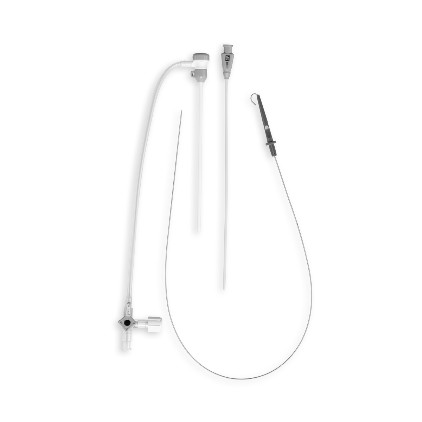Stent-Catheter-Wires - WEBSITE X5 UNREGISTERED VERSION - MedicoDan ApS
Main menu:
Stent-Catheter-Wires
Products
A drug-eluting stent (DES) is a peripheral or coronary stent (a scaffold) placed into narrowed, diseased peripheral or coronary arteries that slowly releases a drug to block cell proliferation. This prevents fibrosis that, together with clots (thrombi), could otherwise block the stented artery, a process called restenosis. The stent is usually placed within the peripheral or coronary artery by an interventional cardiologist or interventional radiologist during an angioplasty procedure.
Drug-eluting stents in current clinical use were approved by the FDA after clinical trials showed they were statistically superior to bare-metal stents for the treatment of native coronary artery narrowings, having lower rates of major adverse cardiac events (usually defined as a composite clinical endpoint of death + myocardial infarction + repeat intervention because of restenosis)

A balloon catheter is a type of "soft" catheter with an inflatable "balloon" at its tip which is used during a catheterization procedure to enlarge a narrow opening or passage within the body. The deflated balloon catheter is positioned, then inflated to perform the necessary procedure, and deflated again in order to be removed.
Some common uses include:
- angioplasty or balloon septostomy, via cardiac catheterization (heart cath)
- tuboplasty via uterine catheterization
- pyeloplasty using a detachable inflatable balloon stent positioned via a cystocopic transvesicular approach.
